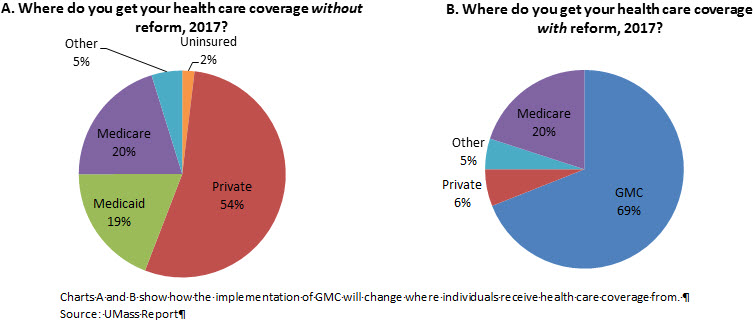CAP's quote does not consist of the administrative costs connected with retail sales of medical products, consisting of prescription drugs and resilient medical equipment. Even the most inclusive studies of administrative costs have actually not included a minimum of one essential piece of the U.S. health care system, specifically, clients. The administrative intricacy of the U.S.
Three-quarters of customers report being puzzled by medical costs and descriptions of advantages. A Kaiser Family Foundation study of individuals recently enrolled in the health insurance coverage market discovered that lots of were not confident in their understanding of the meanings of fundamental terms and principles such as "premium," "deductible," or "supplier network." Insurers and employers invest an approximated $4.8 billion each year to help consumers with low health http://miloetco582.lucialpiazzale.com/7-simple-techniques-for-who-are-california-correctional-health-care-services-executive-staff insurance coverage literacy, according to the consulting company Accenture.
administrative care costs is indisputably higher than that of other similar nations, it's uncertain how much of the distinction is excess and just how much of that excess could be trimmed (how does electronic health records improve patient care). The NAM report estimated that excess BIR costs quantity to $190 billion$ 245 billion in current dollarsor approximately half of overall BIR expenditures in a year.
Based on these portions, $248 billion of the total $496 billion BIR costs in CAP's updated price quote are excess administrative expenses. Many research studies that have attempted to identify excess expenses in the American healthcare system depend on comparisons between the United States and Canada. In their 2010 evaluation of the literature on the distinction in between the 2 countries' health expenses, economists Alexis Pozen and David M.
and Canadian health costs. They found that 62 percent of the distinction between the 2 countries was attributable to costs and intensity of care, and 38 percent was linked to administrative expenses. Compared to Canada, the United States has 44 percent more administrative staff, and U.S. doctors devote about 50 percent more time on administrative jobs. what might happen if the federal government makes cuts to health care spending?.
Woolhandler and Himmelstein approximate that the United States presently invests $1.1 trillion on health care administration, and of that amount, $504 billion is excess. Woolhandler and Himmelstein depend on studies of physicians' time use and used doctor earnings data to translate the share of time doctors invest on administrative jobs into monetary worth; their quote of excess expenses is the distinction between U. how much is health care.S.
Presuming this difference is excess needs a presumption that a Canadian-style health care system would achieve a similar level of administrative expenses in the United States. A separate criticism of the initial 2003 Woolhandler and Himmelstein quotes, as articulated by Henry J. Aaron, an economic expert at the Brookings Organization, is that their approach stopped working to account for distinctions in rates - what is health care.
Getting The What Is Managed Health Care To Work
As a repercussion, the U.S.-Canada contrast catches not simply the differences in the amount of resources dedicated to administrationsuch as doctor time or office spacebut also the distinctions in workplace rates, earnings, and salaries. Taking Woolhandler and Himmelstein's price quote of overall administrative costs as an offered and then making basic changes for price differences, Aaron argues that the 2 scientists overemphasized U.S.
All estimates of administrative expenses are naturally delicate to what part of healthcare investing one considers administrative. For example, time invested taping medical diagnosis or prescription info utilized in billing may likewise be vital for client care, enabling medical groups to share up-to-date details or prevent damaging drug interactions. A current study of an electronic health records (EHR) system approximated that usually, half of a medical care doctor's day is invested on EHR interaction, consisting of billing, coding, buying, and communication.
In a separate study, financial expert Julie Sakowski and her fellow scientists reported discovering varying attitudes among doctors about whether interaction with electronic medical recordsa subset of EHRrepresented administrative or clinical time. As Sakowski and co-authors composed, "Some felt they invested extra effort including documents that was needed only for billing.
system, the share of expenditures that are attributable to administrative costs differs considerably by payer. The BIR expenses for conventional Medicare and Medicaid hover around 2 percent to 5 percent, while those for private insurance is about 17 percent. Some public financing professionals, including Robert Book, have actually argued that the low levels of Medicare overhead are misleading.


Nevertheless, Medicare's per capita administrative expenses are higher than those in other forms of insurance. Even if one compares higher-end price quotes of Medicare administrative expenses to low-end price quotes of costs for private insurance coverage, the gulf between administrative expenses for Medicare and personal protection is large. Organisation for Economic Co-operation and Advancement (OECD) information also show that other nations are able to achieve low levels Hop over to this website of administrative costs while preserving universal protection across all ages of the population.
And while the OECD's meaning includes Visit this link administrative expenses to federal government, public insurance coverage funds, and private insurance coverage, however not those borne by hospitals, doctors, and other suppliers, the stark distinction is still informative. In 2016, administration accounted for 8.3 percent of overall healthcare expenses in the United Statesthe biggest share amongst similar countries.
For example, administrative costs represent just 2.7 percent of overall healthcare expenses in Canada. OECD data likewise show that within a country, administrative costs are higher in personal insurance coverage than in government-run programs. Countries that have multipayer systems with more stringent rate regulation also attain much lower administrative costs than the United States.
When Is Health Care Vote for Dummies
If the United States could decrease administrative expenses down to Canadian levels, it would conserve 68 percent of present administrative expenditures; reducing to German-level administrative expenses would save 42 percent of current administrative expenses. Nevertheless, to assume that by merely adapting another country's healthcare systemwhether it is Canada's single-payer Medicare, Germany's illness funds, or Switzerland's greatly regulated private plansthe United States would automatically attain the very same level of administrative costs may neglect other essential distinctions between countries, including the market power of health care service providers, political systems, and mindsets towards health care.
The lowest possible level of administrative costs for the U.S. healthcare system is not always the optimum level of costs (what does cms stand for in health care). As researchers Robert A. Berenson and Bryan E. Dowd have kept in mind, administrative costs in Medicare may in reality be too low; the program would be more effective with greater financial investment in efforts to reduce expenses and enhance quality.
Developments such as bundled paymentsthe practice of paying suppliers a swelling sum for an episode of care such as a knee replacement or giving birth instead of compensating each specific componentinvolve upfront financial investment in development. Increasing resources to combat scams and abuse would likewise lower overall spending. While the U.S. Department of Health and Human Being Services (HHS) boasts that it sees a $5 return on every $1 it puts towards scams and abuse investigations, that number suggests that the federal government might be underinvesting in those efforts.
Beyond BIR expenses, hospitals, doctor practices, and other healthcare institutions house departments that are complementary to medical services such as medical libraries, public relations, and accounting. A study of administrative expenses in California found that administrative costs represented about one-quarter of doctor income and one-fifth of health center earnings, and BIR costs represented approximately half of administrative expenditures for physician and medical facility services covered by private insurance.